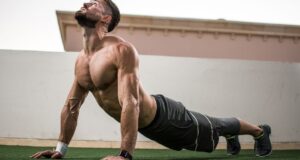You have been painfully slowed down by your muscles while running and are wondering how quickly you can resume your training?
What is a muscle strain?
“Pulls arise, for example, from overexertion of a muscle, from a collision or from improper strain,” says Dr. Klingenberg. A cramp-like pain occurs and the muscle suddenly hardens. “At the cellular level, micro-injuries have occurred, individual muscle torn or bundles have torn,” said Dr. Klingenberg. If the injury is a few hours old, a spindle-shaped swelling can be palpable, but without interruption in the contour. This increased muscle tone should return to normal within a few days.
What are the symptoms of a muscle strain?
A ruptured muscle torn manifests itself as a sudden, sharp, and persistent pain. A dent in the grain can be felt. With severe injuries, a noticeable gap forms in the muscle. The tear causes the muscle to bleed and swelling occurs: the faster a treatment starts, the faster and better the healing process.
What to do if you have a strain
First of all, you need to clarify whether you have a strain or a torn muscle. From the outside it’s often not that easy. Rule of thumb: “If the muscle only hurts and appears hardened, without loss of function and noticeable gaps, it is justifiable to wait and see,” explains Dr. Klingenberg, “In the event of unusually severe pain, bleeding and functional restrictions, however, you should consult a doctor quickly.” This will then use an ultrasound or MRI to clarify whether and how far the muscle is torn.
What treatment helps with strains?
If the symptoms mentioned above advise you to wait and see, you can support the healing with these immediate measures:
- Cooling to relieve pain
- Apply compresses or tight wraps to counteract the swelling
- If the injury affects the lower extremity, the injured leg should be raised

Muscle strain should be quickly cooled and bandaged
How long does a strain take?
“That depends on the severity of the injury,” says Dr. Klingenberg, “You calculate between 2 days and 6 weeks.” As long as you are in pain, the orthopedic surgeon advises not to exercise any physical strain on the injured muscles. “Of course you can also train with pain,” says Dr. Klingenberg, “But movement is bought at the price of increased stress in other regions and evasive movements that can cause pain in other parts of the body.”
Which home remedies help with a strain?
If you don’t have a cool pack on hand, you can cool the pulled area with cold quark compresses. Rubbing in arnica also promises to relieve the swelling. “Anti-inflammatory, diclophenac-containing or herbal ointments over a short period of time also support the healing process,” says Dr. Klingenberg. Anyone who frequently suffers from a strain in a certain area could also suffer from a disturbed acid-base balance. Chronic acidification of the muscles and connective tissue depends heavily on diet. Change your diet to more alkaline products, so eat a lot of vegetables, fruits and soy and less meat. If necessary, it is advisable to take a base preparation or a high-quality dietary supplement for an adequate supply of micronutrients.
How can you prevent a strain?
“You shouldn’t train with pain and watch out for a good quality of movement,” advises Dr. Klingenberg. Anyone who prevents muscular imbalances builds up a good safety buffer. To do this, you should keep your muscles regularly mobile and expand the range of motion of your muscles through targeted functional gymnastics for your sport. Runners should especially keep an eye on the calves and the back of the thighs, swimmers their neck and thoracic spine, and golfers or tennis players should and back. Anyone who is new to training or who frequently suffers from recurrent strains should invest in a screen at a sports orthopedic surgeon in order to identify weak points early on and treat them in a targeted manner.
If you break the muscle torn, act quickly. Cool and bandage the affected muscle area quickly, and you’ll soon be back in training. And from now on, stretching and flexibility exercises are firmly integrated into the sports program!




